#chlorus
Text

//Imavera di sandro Botticelli - la primavera (1477-1478)
#art#Italian art#beauty#primavera#spring#dark academia#classix mythology#mythology#nbc hannibal#laurel tree#painting#drawing#tempera grassa#chlorus#Venus#zephyrus#renaissance art#sfumato#chiaroscuro#art history#culture#italiano
30 notes
·
View notes
Text
Islands have always hosted some of the weirdest ecosystems: giants and dwarfs, flightless birds and relicts of almost gone lineages.
The European islands of the Epigene are no different and host ecosystems much more different than the mainland.



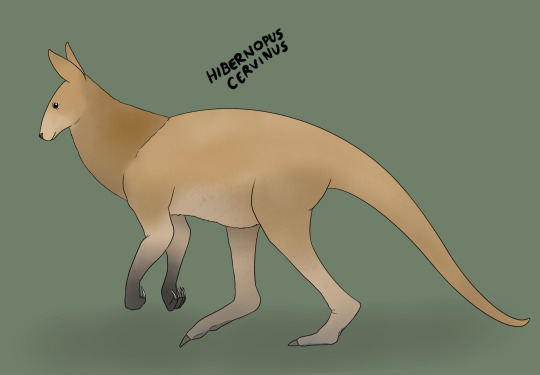



The biggest European archipelago, the British isles, have quite similar ecosystems to each other, being so close and so similar in climate.
Both have ungulates as their biggest animals, with Reeve’s muntjac’s descendants in Ireland, one of the last places where cervids still thrive, that became as heavy as cows (the Hibernian cow-elk Hibernelaphus canobarbus), and ox-like boars in Great Britain (like the London Ox-hog or Bosus londinii).
These islands also share other herbivores, such as big fully flightless pheasants (like the Piasunstruth or Pterolophus chlorus), big walking wallaby descendants (like the Ebdanian maned kangaroo or Hibernopus cervinus) and semiaquatic fur less boars (like Wallace loch-hog or Hyopotamus wallacei) that graze on the smaller island like the Isle of Man during the summer.
One of the biggest predators of toady’s isles are red foxes that survived as medium-sized mesocarnivores, like the Irish giant fox (Ebdanocyon murphyi), but the apex predator is the Devil stork (Diablociconia higginsi), that peck their prey in vital parts to bleed them out and grabs small prey from afar.

In the Mediterranean Crete is quite different from the mainland too. The main herbivore on the island are the Cretan Dodos (Pseudodo ariadnae), flightless pigeons with a skull resembling that of the extinct dodo, hunted by the short-haired Minokatis (Minofelis cretensis), bobcat sized descendants of the endemic wildcats.

The most different of all from the mainland, tho, is definitely Malta, already without any big wild mammal it was almost instantly colonised by birds, who now rule the island. The two biggest species are the almost flightless Valletta’s Cinju (Cygnarius guelii) and the flightless Ghotifalkun (Flacoraptor gabrielis), descended from swans and kestrels.
#spec evo#spec bio#speculative evolution#speculative biology#worldbuilding#artwork#digital art#epigene period#future earth#future evolution
56 notes
·
View notes
Photo

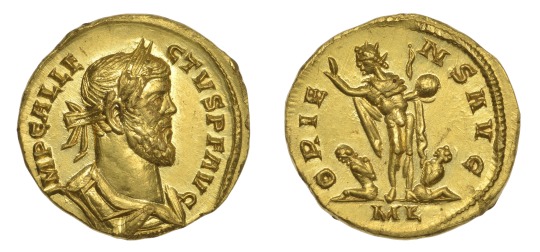
EMPEROR ALLECTUS (293-6), GOLD AUREUS, STRUCK IN LONDON - FOUND IN A FIELD IN KENT March 2019
Provenance: Found near Dover, Kent, adjacent to a Roman road, March 2019
Allectus (died 296) was a Roman-Britannic usurper-emperor in Britain and northern Gaul from 293 to 296.
There are only 24 aurei of Allectus known, from 19 different obverse dies; this coin is a die match to that in the British Museum. Gold was initially produced to pay an accession donation in AD 293 but continued to be issued throughout Allectus’s reign. Coins of Carausius and Allectus were probably demonetized after the latter’s death in AD 296, as none are found in later hoards. The reverse legend on this coin of oriens avg, combined with the sun god Sol, translates as the sun is rising for the emperor.
Allectus is described as the minister of finance, prætorian prefect, ally and co-conspirator under the usurper Carausius. This new independence of Britain was based on a strong naval force of at least two fleets controlling the English Channel and the North Sea. As a result of the loss of Boulogne on 1 March 293 to Constantius Chlorus, it is believed that Carausius was then murdered by Allectus. Little is known from historical records about Allectus: his name in Latin translates as chosen or elected, but his well-produced coinage indicates a smooth transition and the issue of a new denomination, the quinarius or half-antoninianus with a series of war galleys as the reverse design, was certainly innovative. In early 296 Constantius and the prætorian prefect Julius Asclepiodotus sailed in two separate fleets, one from Boulogne, the other from the mouth of the Seine, which slipped past the ships of Allectus waiting by the Isle of Wight (Vectis) in a sea fog. Allectus was defeated in a land battle, probably in Hampshire, by Asclepiodotus and Constantius arrived in London to reclaim Britain.
Only the second found in Kent, and recorded at the British Museum by Sam Moorhead.
#Roman Emperor Allectus#EMPEROR ALLECTUS GOLD AUREUS STRUCK IN LONDON#metal detector#metal detecting finds#gold#gold coin#roman gold coin#ancient artifacts#archeology#archeolgst#treasure#history#history news#ancient history#ancient culture#ancient civilizations#roman empire#roman history
237 notes
·
View notes
Photo
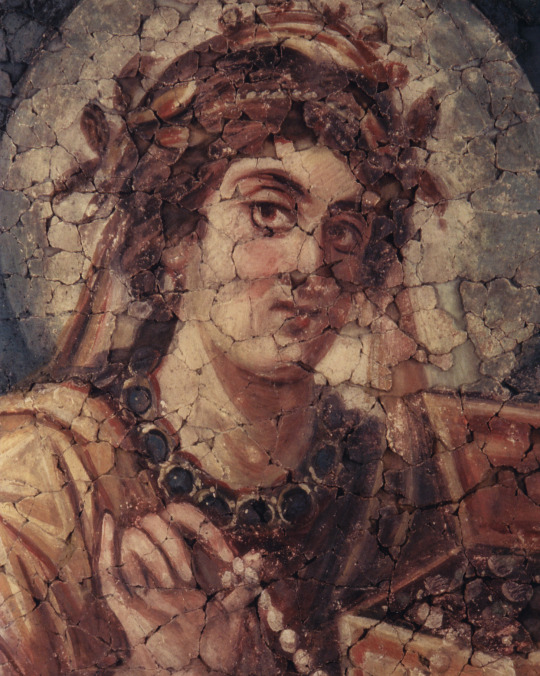
A Roman fresco in Trier, Germany, possibly depicting Constantia, c. 310 AD
Flavia Julia Constantia was the daughter of the Roman Emperor Constantius Chlorus and his second wife, Flavia Maximiana Theodora. She is the half-sister of the first Roman Emperor to convert to Christianity, Constantine the Great.
#fresco#mediterranean#european#european history#constantia#roman fresco#europe#europa#ancient world#ancient history#caucasian#western civilization#cradle of civilization#christianity#christian#catholic#brunette#royal#roman emperor#italy#italian#turkey#Byzantine#roman#spain#france#greece#serbia#born in serbia#born in turkey
385 notes
·
View notes
Text

What did Roman Empire pagan soldiers think of fighting under Constantine and Christianity?
Probably not very much.
The Roman military was a world of its own. More than today, soldiers had their very identity shaped by the institution and people they served. Upon enlisting, they swore allegiance to the emperor and received new names as his servants — Valerius during the tetrarchy and Flavius under Constantine. Those who didn’t speak Latin were pushed to acquire a basic grasp of it, pretty much like the French Foreign Legion of today. Starting from the late republican period, Roman soldiers were accustomed to receiving salaries, booty and pensions from their commanders, not the state in an abstract sense. Under the empire, loyalty often lay with the emperor, as long as he was perceived as strong.
In that frame, Constantine never lost the faith of his men thanks to his talents, accomplishments and image. It surely helped that he was Constantius Chlorus’ son, but dynastic feelings were not so strong in the 4th c. What really mattered was that he was a victorious imperator, with plenty of experience both before and after his ascension. His CV included wars against, and victories over, foreigners (Franks, Goths, Alamanni) and rival emperors (Maxentius, Licinius) alike. That kept soldiers satisfied and himself secure on the throne. Besides, Constantine took care to associate his military exploits with the Christian God. On the contrary, his sons failed to live up to his legacy and had to face claims by men like Magnus Magnentius and Julian.
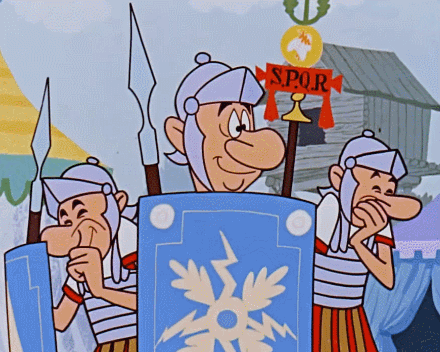
Another thing to consider is the role of religion in the then Roman military. In general, early Christianity wasn’t unanimously for or against military service, hence a decent minority of soliders were Christians even before Constantine. In the late 3rd c., you could find Christians like St. Marcellus holding even the rank of centurion. The statesman Cassius Dio is reported to have spoken of Christians in the comitatus of all four original tetrarchs. Cases of individual disobedience cannot be excluded, of course, but the military was, above all, a state mechanism. Under Diocletian, they persecuted Christians; under Constantine, they fought the Donatists and may have even destroyed the Asclepieion at Aegae, Cilicia.
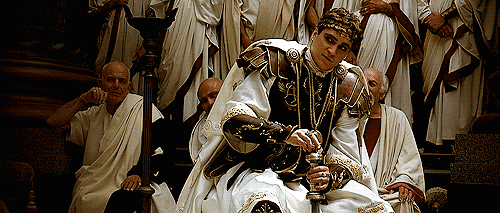
On his part, Constantine didn’t adopt Christianity the way most people after his time imagine(d). There was a long, gradual process, for the most part inscribed into the norms of late antiquity. Nomenclature and visual language were preserved to a considerable extent. Separate Christian and non-Christian prayers are reported to have been taking place at the same time. At some point in the 320s, a group of veterans greeted Constantine with the traditional “May the gods preserve you for us” salute. Two elite army units, Diocletian’s Jovians and Maximian’s Herculians, were not rebranded, although their names recalled the gods Jupiter and Hercules whom the late tetrarchs associated themselves with.
With the benefit of hindsight, we now know that the dynamics of that complex situation ended up favouring Christianity — if anything, all of Constantine’s successors were Christians except for Julian. That, however, should not be taken out of context. Few have a panoramic view of their time or the acumen to predict the future, and the provincials who made up the bulk of the late Roman military were not among them. Even if they were, though, they may not have had particularly strong feelings about any potential outcome. At the same time, various (quasi-)henotheistic traditions like the cult of Sol Invictus and Mithraism were around. The period was transitional, hence quite fluid.

#kemetic dreams#european#europeans#western europe#christianity#roman military#henotheistic traditions#cult of sol invictus#mithraism#christians#constantine
8 notes
·
View notes
Text



The Aula Palatina, also called Basilica of Constantine (German: Konstantinbasilika), at Trier, Germany, is a Roman palace basilica and an early Christian structure built between AD 300 and AD 310 during the reigns of Constantius Chlorus and Constantine the Great.
94 notes
·
View notes
Text
Kilka rzeczy ,które wesprą zdrowie hormonalne:
Jedz wystarczająco. Nie głódź się.
Minimum 7-9h snu dziennie. Dla jednych jest to coś normalnego. Dla innych coś bardzo trudnego. Jeśli zmagasz się z zaburzeniami snu - nie zwlekaj i zadbaj o tę sferę życia.
Najlepiej na niedługo po wstaniu wyjdź na słońce. W pochmurne dni też taka eskpozycja na światło dzienne ma sens.
Spaceruj. Jeśli ma być to jedyna aktywność w ciągu dnia i jesteś w stanie wybrać tylko i aż spacer zrób to. 10 min. ruchu jest dla ciała i umysły lepsze niż żaden ruch.
Podpaski/tampony w trakcie menstruacji ze 100% bawełny, bez chloru.
Kawa to nie śniadanie. Jeśli masz ją wypić to kilka godzin od wstania i nie bezpośrednio po posiłku.
1 h przed spaniem bez telefonu.
Warta uwagi suplementacja to: magnez, wit. D+K2, cynk, wit. C.
3 notes
·
View notes
Text
SAINT OF THE DAY (August 18)

Not much is known about Saint Helena but it is probable that she was born in the middle of the third century in Asia Minor.
She worked as a stable maid as a young woman, according to Saint Anselm.
Helena later married a young Roman official, Constantius Chlorus, who took her as wife despite their difference in social status.
In around the year 270, she gave birth to their first son, Constantine.
Constantius quickly rose in the ranks of the Roman military. Due to political reasons, he was forced to repudiate Helena and marry another.
Helena remained at a distance as she watched her son rise in the court of Diocletian.
In 305, Constantius, now Augustus, and Constantine went to Britain to fight against the Picts.
Constantine became emperor when his father died unexpectedly at York. As the new emperor, his first action was to recall his mother Helena.
Shortly after her son’s accession, Helena converted to Christianity.
Her faith moved her to care for the poor by providing for their needs through generous almsgiving.
She also worked to liberate prisoners and those sent to the mines or into exile.
Constantine’s reign took a downward turn when he ordered the death of his son and that of his second wife.
The family tragedy pushed Helena to go on a pilgrimage to the Holy Land in 326.
There, she ordered the construction of the Basilicas of the Nativity in Bethlehem and of the Ascension on the Mount of Olives.
The work was overseen by Helena whose faith was rewarded when the True Cross was discovered.
The identity of the Cross was confirmed when a dead man was laid on the wood and was miraculously restored to life.
The three nails from the Crucifixion were given by Helena to Constantine.
The date of this discovery and miracle, according to tradition, was 3 May 326 A.D.
St. Helena had a church built on the original site of Jesus’ crucifixion, burial and resurrection, known as the Church of the Holy Sepulchre.
Her son Constantine dedicated this church on September 13-14 in the year 335 A.D.
Even today, the Stations of the Cross in Jerusalem — the “Via Dolorosa” — end at this very spot.
Helena died in an unknown location in 329. Constantine had her body brought back to Rome.
—
TIMELINE OF EVENTS
326 A.D. St. Helena discovers the True Cross in Jerusalem on May 3rd.
335 A.D. Constantine dedicates the Church of the Holy Sepulcher on September 14th.
614 A.D. Jerusalem is invaded by the Persians who steal the True Cross.
629 A.D. The True Cross is recovered and brought back to Jerusalem on September 14th.
6 notes
·
View notes
Text

St. Helen
Saint of the Day
St. Helen, also known as St. Helena (d. 327 A.D.), was a woman of humble means from Asia Minor. She married the future Roman Emperor Constantius Chlorus, and their son Constantine was born c. 272. Constantius divorced Helen in c. 293 to marry Emperor Maximian's daughter for the sake of political gain. When her son Constantine became the Roman Emperor, St. Helen was given the imperial title “Augusta” and was treated like royalty. After Constantine legalized Christianity across the Roman Empire, St. Helen, a Christian convert, went to the Holy Land in search of the actual cross on which Christ was crucified, despite being in her 80s. She questioned local Christians and Jews and learned that the cross was buried under the Temple of Venus. Helen had the temple demolished and excavated. There she discovered the Holy Sepulcher, three crosses, the board with Pilate's inscription, and the nails which pierced Jesus' Sacred Body. In order to determine which cross was the Lord's, the Bishop of Jerusalem touched them to a corpse, causing the man to come back to life. A second miraculous healing of a sick woman confirmed the discovery of the True Cross. Christians flocked to Jerusalem to venerate the Holy Cross. St. Helen then visited all the holy places of Jesus' life and built many churches over their locations, including Bethlehem, the Mount of Olives, and the Garden of Gethsemane. St. Helen is the patron of divorced people, empresses, difficult marriages, converts, and archeologists. Her feast day is August 18th.
5 notes
·
View notes
Text
Roman Leaders as Scents:
Aurelian: vanilla ice cream and chocolate cookies
Probus: chocolate and space flavoured pop tart
Diocletian: orange mixed with daisy
Maximian: rose with a hint of sea salt
Constantius Chlorus: honey, mint and scented beaver pop
Constantine: peppermint and pomegranate seeds
Maxentius: cabbages and sweet Dahlia
Constans: candy cane and sugar roads
Constantine II: apple with bananas
Constantius II: star, sky and the clouds
Julian: old books with a tint of earthly delights
Valentinian: cucumber and cherries
Theodosius the Elder: melted steel with light strawberries
Valens: burning fire with a hint of chicken
Valentinian II: maple syrup and artillery fire
Theodosius I: lime and caramel
Honorius: black blood and black liquorice
Arcadius: lion pee and the clouds (for good measure)
Flavius Stilicho: blackberry and flower petals
Flavius Aetius: the manly sweat combined with axe body spray, lavender, Chanel no.5 and jasmine (i what that smelled like)
Anastasius: rainbow pond made from strawberry, grape and bitter green tea
Justin: Red ginseng and a dirt from mars (lol)
Justinian: lollipop with a slow aftertaste and purple magic
Theodora: margarita, summer farm and chilli peppers
Justinian II: lion skin and tiger eyes alongside dried chilli peppers and cherries
Phocas: stinky cheese mixed with lettuce, tomato and mud sauce
Heraclius: cinnamon, cactus flowers, leaves and actual celestial crystals
John: diluted energy drinks and an annoyingly stubborn coffee and mocha scent
Basil I: high acid level rivers and the scent of the skies
Basil II: coconut, banana and pear
Alexios: charcoal burning in fire and a recently trimmed grass alongside some falling orange leaves alongside cinnamon and a champagne flavoured tea
John II: fresh milk with a hint of lemon pepper macaroon, sweet potato and pumpkin
#random stuff#roman empire#magical trips to the rainbow skies and chocolate lands anyone?#Roman history#roman empire shitposting#Not really connected to their personalities but deviating from the interstate road as a bump car rider#Valentinian I#Valentinian the Great#Aetius’ one is so random#Making a magical potion alongside my spell book in order to resurrect these people from the dead
3 notes
·
View notes
Text
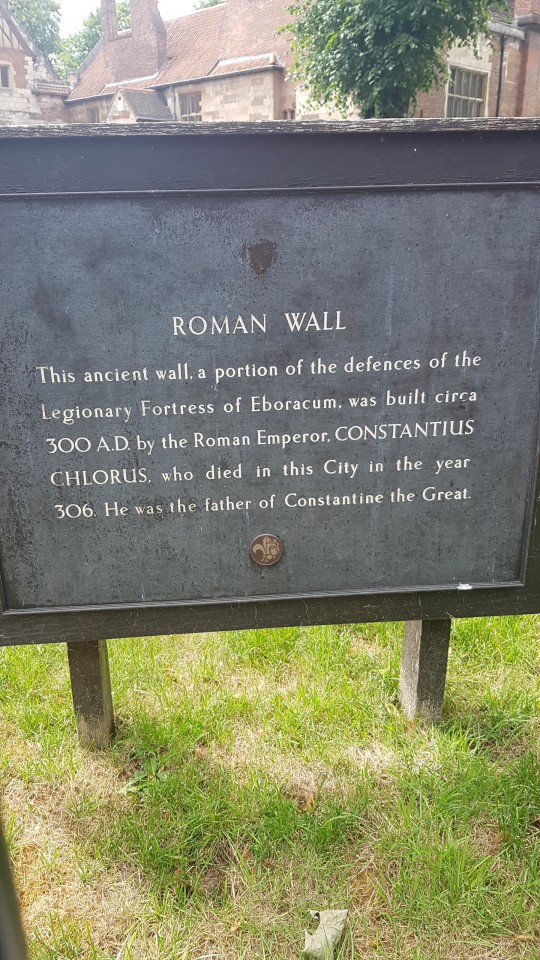

05/07/2023 - history seems to be around every corner in York
"This ancient wall, a portion of the defences of the Legionary Fortress of Eboracum, was built circa 300 AD by the Roman Emperor CONSTANTIUS CHLORUS, who died in this City in the year 206. He was the father of Constantine the Great."
#history#romans#ancient rome#ancient history#the classics#dark academia#academia#academia aesthetic#classic academia#studyblr#york trip 2023
3 notes
·
View notes
Text
VESPIN CHLORUS SIR I LOVE YOU
#critical role#critical role spoilers#exu calamity lb#exu calamity spoilers#exu calamity#i will never spell your name right but sir! mvp
12 notes
·
View notes
Text
Five minutes into episode two and I already am freaking out so here we go, I’ll update it over the next almost 5 hours
Nydas, I didn’t suspect you were scheming with Laerryn and Patia at ALL. What the hell are you guys doing? Patia deliberately reminded the others Laerryn had the bow, is she getting cold feet? What are their intentions? Did Zerxus realize something? Is that why he immediately took off after Nydas? I don’t like any of this
DID THEY GET EVANDRIN KILLED WITH THIS SCHEME, I THOUGHT THE FIGURE HE WAS LOOKING PAST ZERXUS AT WAS ASMOXEUS BUT IT WAS PROBABLY EITHER LAERRYN OR PATIA!! PROBABLY LAERRYN
Fuck fuck fuck Zerxus trusted Nydas and his family with his SON, with Evandrin’s son, and Nydas had a role in Evandrin’s death. If I’m right and the death is what caused the estrangement then this is actually the worst.
This is a tragedy, but god I’m mentally chanting “Zerxus, catch up to them. You have to stop them.”
OH NO ZERXUS WIPING AWAY HER TEARS HE DOESN’T HAVE A CLUE
Zerxus siding with them and saying everyone is bored. Oh boy, this is so arrogant of them. This is going to go so wrong please don’t be dragged into this. Loquatius, Cerrit, Zerxus, please don’t let them do this.
Zerxus’ expression when Patia said “What good is loyalty to a dead person” oooooof
What the fuck is that deception check?? Zerxus could have known. Shit.
Oh god you have to be kidding me Patia knew the raven queen before her accession!?
I hate this description of Vespin and the growths it sends a shiver up my spine ugh
Yeah okay so Vespin didn’t become a god, he didn’t replace the betrayer. Asmodeus isn’t quite free yet, but something changed that can now grant powers. Hm
DEAN LYCRITIA HOLLOW IS INVOLVED IN THE ASCENSION? god she’s jealous of the raven queen. Let death be. It’s a part of the cycle of life.
BRENNAN YOU ASSHOLE SKDJRKJFJRNFNFNFNRMDNF
Yeah the entire ring of silver is dirty. Lycritia haha you evil woman you failed to kill him
I knew Loras was shady, I’m going to say I called it even though it was kind of obvious.
Tree of names?
Well shit alright immediately getting answers because Travis rolled incredibly.
So that tree is what’s being powered, and like Luis said it was in the dream. Oh shit
So we have to talk to Elena about Evandrin??
Damn Travis the rolls failed that time! What was he hiding about Elena????
Well that was quick, RIP leaker cormorant. This is the info Laerryn needed so oh boy.
“Our tenacity outweighs the magisters’”
I don’t think that’s a good thing
Damn Velucia, RIP I guess. And the rest of the oracles. Two weeks ago lines up with Chlorus’ rite.
Zerxus god please be okay why would you walk through
Zerxus oh god why did you heal the lord of hells I’m so scared
Zerxus please get answers for your husband, please don’t get killed
I don’t trust it I don’t trust it I don’t trust it Zerxus please be careful
OH NO OH NO DON’T SAY HIS NAME DON’T DO THAT TO ME WHY ZERXUS I’M SO SORRY
Zerxus you kind determined gentle arrogant man I love you with all my heart please be careful
“We all tumbled out”
If he’s here where are the rest of them and what are they up to damn it this is terrifying
So what? Asmodeus thought he was an author making a character more well rounded?
Zerxus I love you, I love your ability to empathize. I want this to work so badly.
Shit shit shit I’m so scared, Asmodeus is exposing that people are lying to Zerxus and we know all his friends have lied to him about Evandrin except Cerrit. Fuck. Did Laerryn and Loquatius divorce after what happened to Evandrin?
I think Brennan is finally going to get his PvP that he didn’t get in Escape from the Blood Keep
Oh god was Lycritia the one who just killed the helmswoman? Who else is with her? Damn damn damn.
#exu calamity spoilers#exu calamity#exandria unlimited: calamity#live reaction#patia por'co#zerxus ilerez#nydas okiro#laerryn coramar seelie#cerrit agrupnin#loquatius seelie
10 notes
·
View notes
Text
So these oracles were probably seeking prophecies to ensure the Betrayer conspiracy succeeded once Vespin Chlorus kicked this all of with the ritual, right?
6 notes
·
View notes
Photo


Walther von der Vogelweide, I Saw the World: Sixty Poems
If I could add to this something that can also be known but that cannot be given in a lecture to an audience as large as this, you would see that it was precisely through a later reincarnation of Judas that the fusion of the Roman with the Christian element occurred. The reincarnated Judas was the first who, as we might say, had the great success of spreading Romanized Christianity in the world. The treaty concluded by the Judas of the Old Testament with the Romans was the prophetic foreshadowing of what was later accomplished by another man, who is recognized by occultists as the reincarnation of that Judas who had to go through the severe soul-testing of the betrayal. What through his later influence appears as Christianity within Romanism and Romanism within Christianity is like a renewal of the alliance concluded between the Old Testament Judas and the Romans, but transferred into the spiritual.
—Rudolf Steiner, The Gospel of St. Mark: Lecture II
You will remember an important event from history when Constantine, son of Constantius Chlorus, defeated Maxentius and thus introduced Christianity externally into the mainstream of Western civilization. Constantine had to fight that important battle against Maxentius so that he could establish Christianity in his western empire as the official religion. Had this battle not taken place as it did, the entire map of Europe would have been different. But this battle really was not decided by military skill, that is, not by the intellectual prowess available to people in those days, but by something entirely different. Maxentius consulted the so-called Sibylline Books, the prophetic oracles of Rome, which guided him into leading his army out of the assured safety of Rome's walls into the open field, in order to confront Constantine's army. Constantine, on the other hand, had a dream before the battle in which he was told, “If you approach Maxentius under the banner of the Mystery of Golgotha you will reach a great objective!” Indeed, Constantine carried the symbol of the Mystery of Golgotha — the cross — when he led his forces into battle, even though his army was three-fourths smaller than that of Maxentius. Enthused by the power emanating from the Mystery of Golgotha, Constantine won that historical battle resulting in the external introduction of Christianity to Europe. When we realize the extent to which people in those days understood the Christ impulse purely by intellectual means, it is not surprising to find that there ensued an endless theological quarrel. People argued whether or not Christ was consubstantial with the Lord in all eternity, and so on. Let us say this, that the degree of knowledge of the Christ impulse available to human beings in those days is not important, but rather the fact that the Christ impulse was present and that through his dream it guided Constantine to bring about what had to happen. What is important is the actuality of the Christ and His real and visibly active power. Only in the science of the spirit do we begin to understand what the Christ impulse is.
—Rudolf Steiner, Christ In Relation To Lucifer and Ahriman (GA 159)
#Walther von der Vogelweide#Constantine the Great#Judas Maccabees#Judas Iscariot#anthroposophy#spiritual science
3 notes
·
View notes
Text
Saints&Reading: Thursday, August 18, 2022
August 18_ August 5
Gregorian calendar ( old cal.) : For feast of the Transfiguration f our Lord.

THE MARTYR EUSIGNIUS OF ANTIOCH (362)

The Martyr Eusignius was born at Antioch in the mid-third century. For sixty years he served in the Roman armies of the emperors Diocletian, Maximian Hercules, Constantius Chlorus, Constantine the Great and his sons. Saint Eusignius was a companion of Saint Basiliscus (March 3 and May 22), and he provided an account of his martyrdom. At the beginning of the reign of Saint Constantine the Great, Saint Eusignius was a witness to the appearance of the Cross in the sky, a prediction of victory.
Saint Eusignius retired in his old age from military service and returned to his own country. There he spent his time in prayer, fasting, and attending the church of God. So he lived until the reign of Julian the Apostate (361-363), who yearned for a return to paganism. Through the denunciation of one of the Antiochian citizens, Saint Eusignius stood trial as a Christian before the emperor Julian in the year 362. He fearlessly accused the emperor of apostasy from Christ, and reproached him with the example of his relative, Constantine the Great, and he described in detail how he himself had been an eyewitness to the appearance of the sign of the Cross in the sky. Julian did not spare the aged Saint Eusignius, then 110 years old, but ordered him beheaded.
SAINT OSWALD OF NORTHUMBRIA, KING AND MARTYR (642)

Saint Oswald of Northumbria (604-642) is venerated by English Christians as one of their greatest national heroes and leaders, one of the main apostles of the Orthodox faith in the north of England, as a patriot who loved his people and kingdom, who led a holy life and even became a martyr. The future saint was born in the small kingdom of Deira in northern England. His father, Ethelfrid, became King of Bernicia, another small kingdom in the north. St. Oswald was destined to unite these two kingdoms into one kingdom called Northumbria.
We know very little about the early years of St. Oswald. His father was killed in 616 and young Oswald most probably went into exile in Scotland, where he had close links with the famous monastery on Iona, founded by St. Columba in c. 563. Eventually St. Oswald was baptized on Iona. Some sources claim that he also lived in Ireland for several years. In 633 the Welsh king Cadwallon (only a nominal Christian) in alliance with the notorious pagan King Penda of Mercia killed the saintly King Edwin of Deira—uncle of Oswald—the first ruler to introduce Christianity into northern England (though his missionary work there did not last long).
After that tragic event, St. Oswald, filled with religious zeal, firmly decided to return to his native land to drive the pagan usurpers away and restore a pure and serious Christianity among his fellow countrymen. Before the battle with the pagans, which took place at a place called Heavenfield near Hadrian’s Wall, St. Oswald erected a large wooden cross and fervently prayed before it on his knees, asking the Lord to grant him and his soldiers victory. According to tradition, at that time St. Columba of Iona (who had reposed over 40 years before) appeared to him in a vision and encouraged and predicted victory. The soldiers prayed and promised to accept baptism in case of victory.
The following day by the grace of God St. Oswald’s army defeated the whole army of pagans so that Penda had to leave the battlefield alone. It was a real triumph for the holy king and for the people who were freed from pagan tyrants. It was decided to leave the cross at the same place and later many healing miracles occurred from it. Unfortunately, there were almost no missionaries in the kingdom at that time, one of the few remaining ones was the saintly Deacon James, who preached in York, Lincoln and other places. St. Oswald then asked the brethren of Iona to send him a missionary to help Christianize the region.
The first monk who came to Northumbria was too harsh with the native people, and then it was decided to send a monk called Aidan, whom St. Oswald came to love at once for his kindness, apostolic spirit, humble life and genuine asceticism. St. Oswald gave Aidan (who in the future was to become a great saint) an island called Lindisfarne near the Northumbrian coast, where St. Aidan built a monastery and arranged life on the pattern of Celtic communities. Aidan became Abbot and Bishop of Lindisfarne and it soon became a great monastic and missionary centre. Aidan travelled much throughout the kingdom, walking from one settlement to another, bringing the local inhabitants the Good News. St. Oswald, who knew Irish very well, was for some time St. Aidan’s personal interpreter, as Aidan did not speak the Northumbrian dialect very well. Evangelization was very fruitful, for more and more Northumbrians came to live in Christ and were baptized. As the Venerable Bede writes, meanwhile, King Oswald strengthened in goodness and humility, he was generous in all his deeds, founding many monasteries and churches all over Northumbria.
Once Sts. Oswald and Aidan were sitting at the same table on Easter Day. Servants brought the king the royal meal on a large, silver dish. Suddenly one servant informed him that a great multitude of beggars had gathered in the neighbouring streets, waiting for alms from the king. The king at once ordered all the food to be given to the beggars as well as to break the dish into pieces and give them to the needy. St. Aidan then took Oswald by his right arm and exclaimed: “May this arm be incorrupt forever”. And this prophecy was fulfilled. With time Oswald became the “Overlord” or most powerful ruler in England at the time. Not only Angles, but also Britons, Picts and Scotts were under his dominion. St. Oswald gathered the lands for the Glory of God, not for his own glory, wishing to bring as many people to Christ as possible.
In York Oswald completed the building of the Minster Church, begun by St. Edwin before him. His activities spread to Lindsey in present-day Lincolnshire, where he too was venerated. The king maintained friendly relations with other kingdoms, like Wessex. Thus, he was godfather to King Cynegils of Wessex, who was baptized by the holy Bishop Birinus, and even married Cynegil’s daughter Cyneburgh. Amazingly, St. Oswald combined ruling the kingdom with a very ascetic life: we know from St. Bede that the king often prayed alone in the church from early morning for many hours with his arms outstretched and that he received from the Lord the gift of unceasing prayer (a gift obtained by the Church Fathers). St. Oswald was the most pious, God-fearing and glorious king of Northumbria for eight years. He praised the Lord all the time and strove to do only His will.
At the age of 38, Oswald was martyred by the pagan king Penda—the same Penda whom he had earlier defeated at Heavenfield. Penda declared war on him, and the two armies fought at the battle of Maserfield (this site is identified by many historians with the present-day town of Oswestry in Shropshire). The Christian army lost the battle. St. Oswald, knowing that he was to be killed too, kept praying for his soldiers’ souls and until his last breath he called upon the Name of Jesus. Penda cut off the saint’s head and right arm and hung them on a pole as trophies. (According to tradition, Oswald’s tame and faithful raven placed one of the king’s arms on the tree nearby and it became evergreen, and when it dropped on the ground, a well gushed up from the spot).
The saint’s successor, King Oswiu, translated his incorrupt relics to Lindisfarne, and later the saint’s right arm was translated to Bamburgh. Late in the seventh century St. Oswald’s niece, the holy Queen Ostrith, had his relics translated to the monastery of Bardney in Lincolnshire. St. Oswald’s veneration as a holy and right-believing King and Martyr began immediately after his death. St. Bede reports many cases of miracles from the relics, from the cross (near which he was martyred) of St. Oswald and even from the earth on which he was slain. Thus, once a sick horse was healed on the spot where the king fell in battle, and on the same day a paralysed girl was fully restored there. An Irishman, who before had led unholy life, fell seriously ill. He then sincerely repent...please continue reading orthodox christianity


MATTHEW 22:23-33
23 The same day the Sadducees, who say there is no resurrection, came to Him and asked Him, 24 saying: "Teacher, Moses said that if a man dies, having no children, his brother shall marry his wife and raise up offspring for his brother. 25 Now there were with us seven brothers. The first died after he had married, and having no offspring, left his wife to his brother. 26 Likewise the second also, and the third, even to the seventh. 27 Last of all the woman died also. 28 Therefore, in the resurrection, whose wife of the seven will she be? For they all had her. 29 Jesus answered and said to them, "You are mistaken, not knowing the Scriptures nor the power of God. 30 For in the resurrection they neither marry nor are given in marriage, but are like angels of God in heaven. 31 But concerning the resurrection of the dead, have you not read what was spoken to you by God, saying, 32 I am the God of Abraham, the God of Isaac, and the God of Jacob'? God is not the God of the dead, but of the living." 33 And when the multitudes heard this, they were astonished at His teaching.
2 CORINTHIANS 1:12-20
12 For our boasting is this: the testimony of our conscience that we conducted ourselves in the world in simplicity and godly sincerity, not with fleshly wisdom but by the grace of God, and more abundantly toward you. 13 For we are not writing any other things to you than what you read or understand. Now I trust you will understand, even to the end 14 (as also you have understood us in part), that we are your boast as you also are ours, in the day of the Lord Jesus. 15 And in this confidence I intended to come to you before, that you might have a second benefit- 16 to pass by way of you to Macedonia, to come again from Macedonia to you, and be helped by you on my way to Judea. 17 Therefore, when I was planning this, did I do it lightly? Or the things I plan, do I plan according to the flesh, that with me there should be Yes, Yes, and No, No? 18 But as God is faithful, our word to you was not Yes and No. 19 For the Son of God, Jesus Christ, who was preached among you by us-by me, Silvanus, and Timothy-was not Yes and No, but in Him was Yes. 20 For all the promises of God in Him are Yes, and in Him Amen, to the glory of God through us.
#orthodoxy#orthodoxchristianity#easternchristianity#originofchristianity spirituality holyscriptures gospel bible wisdom
3 notes
·
View notes